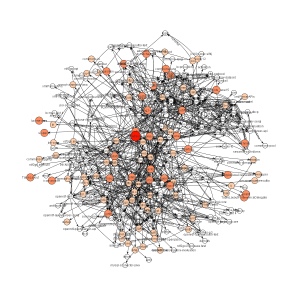Entity search can be defined as an ‘answer engine’ and works by using ‘entities’ on a web page that are recognised by search engines to provide specific and well-defined queries. So, is it the future of SEO?
The Hummingbird Update
 In September 26, Google had taken a step towards in becoming an ‘answer engine’ as the Hummingbird update came into play. Google is quickly implementing a semantic Web technology through updates, whilst still maintaining the main parts of its old algorithm, which is how Google plans to evolve from text links to answers. Google are not making huge changes overnight, but are gradually putting in place the ‘answer engine’ and will display more specific results for the user in order to give web users a better and improved experience.
In September 26, Google had taken a step towards in becoming an ‘answer engine’ as the Hummingbird update came into play. Google is quickly implementing a semantic Web technology through updates, whilst still maintaining the main parts of its old algorithm, which is how Google plans to evolve from text links to answers. Google are not making huge changes overnight, but are gradually putting in place the ‘answer engine’ and will display more specific results for the user in order to give web users a better and improved experience.
The steps taken so far by Google to progress in this direction: the Knowledge Graph, the Voice Search and Google Now. These three ‘updates’ each provide answers for users and can even sometimes anticipate users questions due to the ‘entities’ used by Google as opposed to ‘keywords’.
Unstructured Vs. Structured Data
The previous two decades has been witness to the Internet, search engines, and Web users all being classed as unstructured data; meaning that the data gathered by search engines has been unorganised and/or unclassified. Therefore, only patterns within WebPages were able to be recognised (keywords), without any meaning attached to the pages.
This leads to structured data and semantic search:
 Semantic Search is a way of classifying data gathered and searched for, through labelling every piece of information as an ‘entity’ — this can also be referred to as structured data.
Semantic Search is a way of classifying data gathered and searched for, through labelling every piece of information as an ‘entity’ — this can also be referred to as structured data.
Structured data provides very accurate product data, which is not only beneficial to the user, but also the retailers. The way this works is that search engines classify, understand and link the structured data aspects together to provide a targeted search result. Additionally, Semantic search will not only optimise retail products.
Have a look at schema types, which is the technical language that’s required when creating a structured Web of data and in which case becomes machine-readable.
An example of how semantic search data is used to identify and provide a more specific answer:
Mrs. Keller → subject → an entity
Algebra → object → an entity
Is teaching → predicate or relationship → links the entities
Links to Answers
When this logic is expanded in terms of technology being structured, using schema, which has the ability to answer our specific questions and queries without using keywords or anchor text links, web designers, SEO professionals and so on, have to get ahead of the game by making sure they implement these practices for their clients and for themselves. Ignoring these semantic updates will surely damage a website in terms of search results, as they will be simply left behind and then find it very difficult to catch up again, if at all.
Understanding vs. Indexing Data
Structured data will significantly improve a search engine’s capability to “understand” rather than pick out ‘keywords’ relevant to a users search query ‘index data’. This will provide a big breakthrough in terms of being able to receive accurate answers to questions when ‘asking’ a search engine.
Making Your Business Data & Content Visible With Semantic Markup
Using semantic markup now will enable a business’s data and even digital content (rich media video etc) to become very easily readable and accessible to search engines, which by the way will stand you in good stead. The changes are happening now and will continue, which will give businesses a head start in terms of being higher ranked within search engines, now and in the future.
Lisa Pollitt, the author of this article is an expert in the SEO field and has several years experience gaining vast knowledge in the industry and on white-hat SEO techniques.